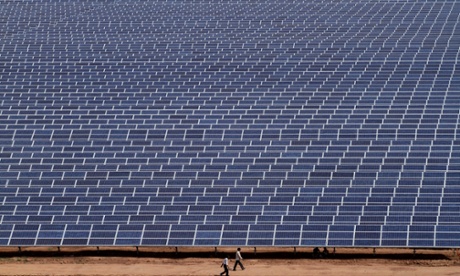 Keeping it clean: a hydropower site at Holbuvatnet in the highlands of eastern Norway. Photo by Ximonic/Simo Räsänen via Wikimedia Commons |
By Tim Radford, Climate News Network
This piece first appeared at Climate News Network.
LONDON—A global low-carbon energy economy is not only feasible, it could double electricity supply by 2050 while actually reducing air and water pollution, according to new research.
Even though photovoltaic power requires up to 40 times more copper than conventional power plants, and wind power uses up to 14 times more iron, the world wins on a switch to low-carbon energy.
These positive findings are published in the Proceedings of the National Academy of Sciences by Edgar Hertwich and Thomas Gibon, of the Norwegian University of Science and Technology Department of Energy and Process Engineering.
LONDON—A global low-carbon energy economy is not only feasible, it could double electricity supply by 2050 while actually reducing air and water pollution, according to new research.
Even though photovoltaic power requires up to 40 times more copper than conventional power plants, and wind power uses up to 14 times more iron, the world wins on a switch to low-carbon energy.
These positive findings are published in the Proceedings of the National Academy of Sciences by Edgar Hertwich and Thomas Gibon, of the Norwegian University of Science and Technology Department of Energy and Process Engineering.



 A recent
A recent 



 “It’s the most inspirational work that I’m doing…this is an inspirational and aspirational effort…at the heart of it is love of place and energy democracy.” Mariel Nanasi and the citizens of Santa Fe, NM, are exploring the economic and environmental benefits of more local and locally-controlled energy production. Is their city ready to take the lead?
“It’s the most inspirational work that I’m doing…this is an inspirational and aspirational effort…at the heart of it is love of place and energy democracy.” Mariel Nanasi and the citizens of Santa Fe, NM, are exploring the economic and environmental benefits of more local and locally-controlled energy production. Is their city ready to take the lead?
